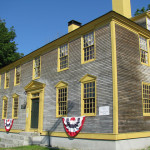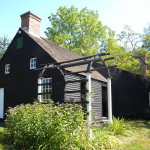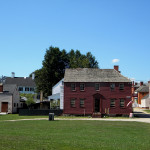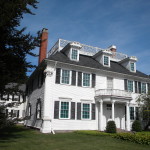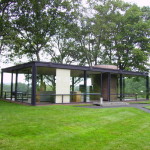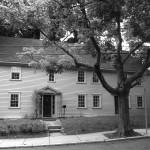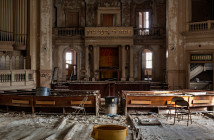These are hard times for historic house museums. According to research conducted by the Pew Charitable Trust in 2008, there are more than 15,000 historic house museums in the United States (see footnote for more information on this statistic). This is a staggering number, but one that has most likely dwindled with the troubled economy as many have been forced to shut down and even sell their property to private buyers. While important in telling the story of this country, a particular region, family, or groups of people, there are far too many historic house museums. In a region which prides itself on having remarkable examples of early American architecture and a rich history, New England house museums are also struggling to stay afloat—reflecting a sad national trend.
In Exeter, New Hampshire, the American Independence Museum recently announced that it has laid off the museum’s entire staff and canceled all of its educational programming. This was all done in order to rethink the museum's strategic and operational plan. The museum, which operates on a $200,000 annual budget, has been operating in the red for the past two years, a situation which may be the case for museums of its type throughout the region and country.
Struggling to attract visitors, many of these small museums need to rethink the way they deliver information to current and potential visitors. We live in a country with many histories and rapidly changing demographics. If the exit polls from the last election didn't emphasize this enough, I don’t know what will.
Historic house museums need to find ways to make history relevant to everyone. They must also adapt with the times because as it is, the audience that many of these house museums have had in mind in the past, isn’t the same audience that may show up for a tour in the future. "If you want to play in a modern, relevant space, then you have to think differently and present differently. We want to tell the best story we can to as many people as we can," says Doug Smith, executive director of Montpelier’s Center for the Constitution in this article on the demise of historic house museums in Maryland and Virginia.
And just as historic houses are rethinking ways to stay relevant in the 21st century, the preservation community needs to reconsider its least creative gift to history--the act of turning a historic house into a museum. The saying "George Washington Slept Here" has been a cliché since the beginnings of the preservation movement and we must beyond saving houses where white men once lived for interpretation as museums.
The American Independence Museum hopes to re-open in the spring with a much clearer vision of the future. In the meantime, what do you think about historic house museums? What are some ways historic house museums can stay relevant in this century?
- Folsom Tavern, 1775. The American Independence Museum, Exeter, NH. Photo courtesy of Oliva732000 on Flickr.
- The Hamilton House, South Berwick, ME. c. 1785. National Historic Landmark. Owned and operated by Historic New England. Photo courtesy of the author.
- Outbuilding at The Hamilton House, South Berwick, ME. c. 1785. National Historic Landmark. Owned and operated by Historic New England. Photo courtesy of the author.
- Strawbery Banke, Portsmouth, NH. Photo courtesy of the author.
- Governor John Langdon House, 1784. National Historic Landmark located in Portsmouth, NH. Owned and operated by Historic New England. Photo courtesy of the author.
- Castle in the Clouds – Historic Lucknow Estate, 1913-1914 Moultonborough, NH. Photo courtesy of the author.
- Philip Johnson’s Glass House, completed in 1949. New Canaan, CT. Photo courtesy of the author.
- The Pierce House, 1683. Dorchester, MA. Owned and operated by Historic New England. Photo courtesy of the author.
For more information on historic house museums and sustainability read Susan R. Orr's Master's Thesis "Historic House Museum Sustainability in the 21st Century: Paths to Preservation" as submitted to the Graduate College of Seton Hall University.


